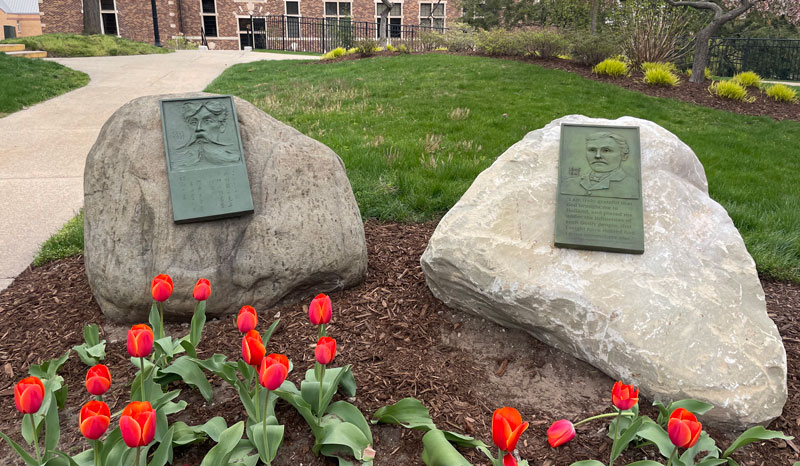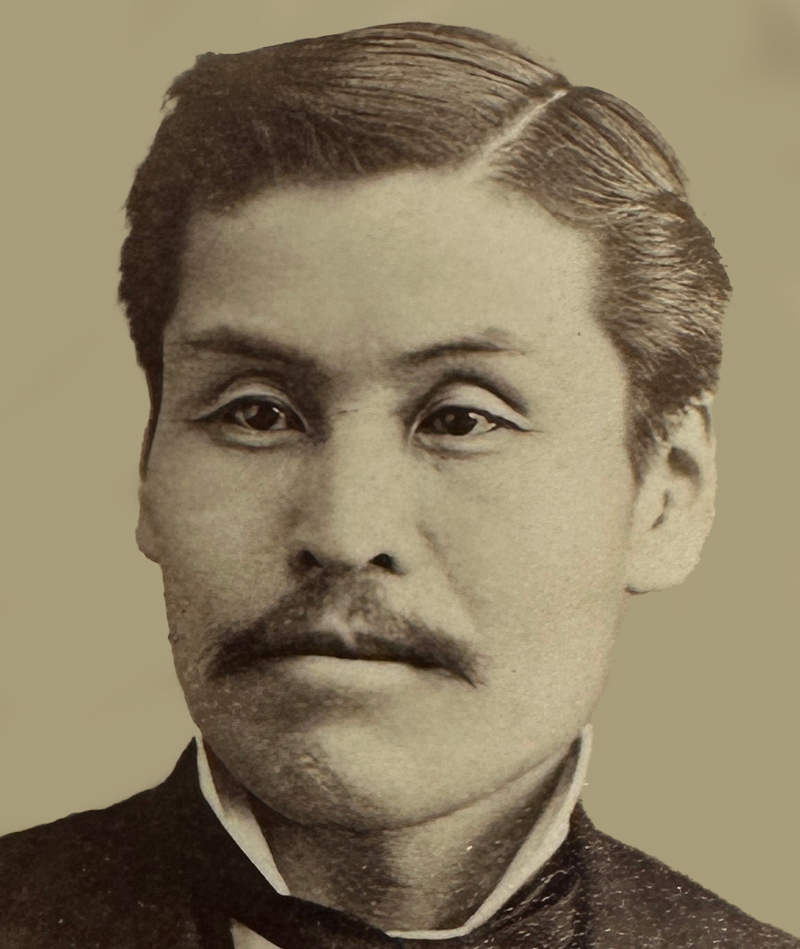Transforming Students, Transforming the World
The Japanese Legacy Celebration honors the story of the early Japanese students at Hope College and the 155-year relationship our institution has had with Japan.
 This celebration recognizes not only the early Japanese graduates but also Hope’s
rich history of welcoming students from around the world to our campus and the tremendous
impact they have in transforming the world upon their graduation.
This celebration recognizes not only the early Japanese graduates but also Hope’s
rich history of welcoming students from around the world to our campus and the tremendous
impact they have in transforming the world upon their graduation.
We express our gratitude for the resilience and courage of Kumaji Kimura and Motoichiro Ohgimi and honor the vision of President Phelps and his wife Margaret, who welcomed and invested in these two men who significantly influenced the future of Christian education in Japan. We are grateful to our alumni and friends from Japan for making the trip to Hope College for the Japanese Legacy Celebration, and to the many donors and colleagues at Hope College whose efforts have made this celebration possible.
- Motoichiro Ohgimi
-
 In 1869, at age 24, Motoichiro was adopted by an Ohgimi family to become their heir,
a common practice in those days. Ohgimi and Kimura spent the ensuing eight years in
Holland after they by chance in New York met Philip Phelps Jr., the first president
of Hope College, from which they graduated in 1879. They then attended New Brunswick
Theological Seminary and were ordained as ministers of the Reformed Church prior to
their return to Japan in 1882. Ohgimi became involved with the translation of the
New Testament into Japanese and the establishment of Meiji Gakuin where he taught
a few years. In 1890, he moved to Nagasaki to become the third principal of Steele
Memorial Academy until 1895. Thereafter, Ohgimi became involved with Methodist missionary
activities including pastor of Asakusa Church from 1906 where he established an educational
facility for the blind. He was back in Holland in 1908 looking for funding for this
facility. Ohgimi spent his final years writing his New Testament Greek-Japanese dictionary,
a lifetime work, published in 1940. He died in late December 1941 at age 96, just
weeks after Pearl Harbor.
In 1869, at age 24, Motoichiro was adopted by an Ohgimi family to become their heir,
a common practice in those days. Ohgimi and Kimura spent the ensuing eight years in
Holland after they by chance in New York met Philip Phelps Jr., the first president
of Hope College, from which they graduated in 1879. They then attended New Brunswick
Theological Seminary and were ordained as ministers of the Reformed Church prior to
their return to Japan in 1882. Ohgimi became involved with the translation of the
New Testament into Japanese and the establishment of Meiji Gakuin where he taught
a few years. In 1890, he moved to Nagasaki to become the third principal of Steele
Memorial Academy until 1895. Thereafter, Ohgimi became involved with Methodist missionary
activities including pastor of Asakusa Church from 1906 where he established an educational
facility for the blind. He was back in Holland in 1908 looking for funding for this
facility. Ohgimi spent his final years writing his New Testament Greek-Japanese dictionary,
a lifetime work, published in 1940. He died in late December 1941 at age 96, just
weeks after Pearl Harbor.Motoichiro Ohgimi was born in Edo (now Tokyo) in 1845 as the third son of an upper-class samurai family (a Hatamoto) loyal to Japan’s Tokugawa government. As is the case with many young samurai, Motoichiro (whose surname was not yet Ohgimi) was educated at a school focused on Confucian studies (where he likely first met Kimura). Motoichiro fought in the Boshin War against imperial forces aiming to restore Japan’s emperor to power. With the Meiji Restoration in 1868, however, both Ohgimi and Kimura, who remained in touch, felt they had no future in the new Japan and with the assistance of Katsu Kaishu, their former commander, traveled to the US in early 1871 aboard the same ship that carried Arinori Mori, Japan’s first ambassador to the US.
- Kumaji Kimura
-
 Kumaji Kimura was born in Kyoto in 1845 as the second son of a samurai family loyal
to Japan’s Tokugawa government. At age 8, he went to live with his grandfather in
Edo (now Tokyo) and attend a school focused on Confucian studies, as many samurai
youngsters did. (He likely first met Ohgimi at this school.) When his grandfather
died the following year, he was adopted by Hazan Kimura, an instructor at the school.
Kumaji Kimura was born in Kyoto in 1845 as the second son of a samurai family loyal
to Japan’s Tokugawa government. At age 8, he went to live with his grandfather in
Edo (now Tokyo) and attend a school focused on Confucian studies, as many samurai
youngsters did. (He likely first met Ohgimi at this school.) When his grandfather
died the following year, he was adopted by Hazan Kimura, an instructor at the school. Kimura fought in the Boshin War against imperial forces, but was on the losing side at the time of the Meiji Restoration in 1868. He and Ohgimi felt they no longer had a future in Japan, and through the assistance of Katsu Kaishu, their former commander, they headed to the US in early 1871 without a clear plan. Kimura’s wife, Tōko, and young son, Yukichi, remained in Japan. From San Francisco, they traveled by train to New York where they came into contact with Hope’s first president Philip Phelps Jr. who arranged for them to go to Holland. They began a new life at Van Vleck Hall, entering the “D” class of the Preparatory Department, and eight years later graduated from Hope College. They were both baptized at Hope Church in 1872.
After graduation they attended New Brunswick Theological Seminary, and in 1882, became ordained ministers. Upon his return to Japan, Kimura was a pastor at various churches, an instructor at Meiji Gakuin, and he and Tōko also opened Meiji Girls’ School, though Tōko died of cholera a year later. Kimura moved to Komoro, north of Tokyo, and in 1893 opened Komoro Gijuku, a school for local junior high schoolers. Tōson Shimazaki, whom Kimura baptized in 1888, came to teach English and Japanese until the school closed in 1906. In his later life Kimura preached at churches in Nagano and spent his last years in Tokyo with summers in Komoro. He died in 1927, and Ohgimi delivered the Benediction at his funeral.
Martha Miller Center257 Columbia AvenueRoom 107Holland, MI 49423
workP. 616.395.7605
offcampusstudy@hope.edu










